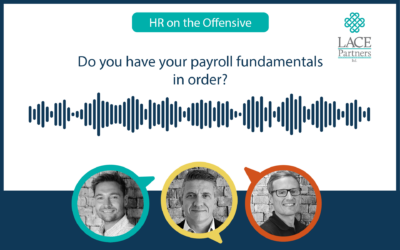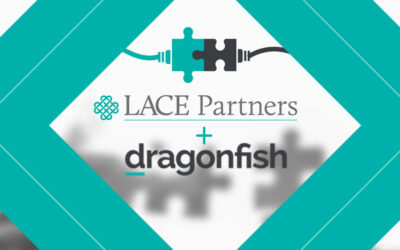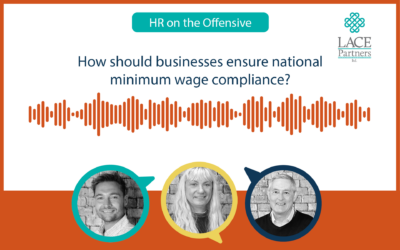‘Which team should look after employee experience? In a recent HR on the Offensive podcast Chris and Emma Leonis from LACE spoke to Tope Sadiku, Global Head of Digital Employee Experience from Kraft Heinz about just that. We discussed how the pandemic focused the minds of employee experience for her business, but also in general how EX should be viewed as a collective responsibility (spoiler alert). We’ve summarised that in today’s blog so read on to find out more.
We run a community forum for EX professionals that takes place every quarter. It is invitation only but if you are an EX specialist and you’d like to find out more, again, fill in the form below and we’ll get in touch.
The value of authentic feedback
I used to think I needed a plan before beginning anything. When a plan was well-defined, I could communicate and begin working on something. Now I understand that I need the agility of an idea, one where there is some proof of concept already in place.
People in the workplace now are more accepting of changes in technology. They iterate more on their work than people did before the pandemic. The world is always changing, so it is only logical that things should change as well. I love the blurring of the lines between your professional and personal lives, because it brings out the human in us all. If people are able to feel more at home in their personal lives then they feel more comfortable in giving honest feedback and when you look at that in the context of employee experience, it enables you to get better feedback that can be actionable.
We wanted our employees to tell us how they felt in the moment. At KraftHeniz we have “collaboration champion’s team space” that anybody can join and raise any questions they want. IT and other employees then review these questions and will answer them. We communicate this to the business and when the business knows it gets feedback that is acted upon, they see the value. In addition, we also have our engagement surveys, which allow us to see how we performed against a set criterion of questions over a defined period in time. I like to have ‘in the moment’ feedback, but sometimes you need to give people time to think which is why I like our periodic surveys; which is why there is value in a multiple feedback approach.
Is all feedback created equal amongst employees?
There are technological barriers to entry. Unlike our office workers not all our frontline workers have a dedicated device. This means we have to get innovative in terms of how we collect feedback, sometimes we use kiosks or shared laptops. Employee archetypes are something I like to look at, so instead of only stating your function and location we also layer in the employee archetypes. For example, what is your attitude towards advancements or disruption? Some of these archetypes run through all are different employee types.
The evolution of a dynamic company culture
We’ve always had a dynamic culture during my time within the business, but to get where we are today, we’ve had to grow in to how we operate. Both Kraft and Heinz have been around over 100 years, however, the new merged company KraftHeinz has only been around since 2017. It’s like when two families are merging; it takes time for people to find their rhythm. We’ve brought in several phenomenal leaders. Our Chief Learning & Diversity Officer has brought in a culture of creativity and continual learning. She has done a fantastic job embedding this culture into the roots of the organisation.
We are not perfect, but we are on the way to being great. We are a matrix organisation meaning we don’t tend to sit in traditional functions. I myself sit within the technology function. There are times when I work very closely with my tech counterparts, but I also tend to work quite heavily with our Head of Facilities. We like to operate more around business objectives in this matrix style or in tribes and squad’s setup. Tribes and squads refer to when people come together on business objectives and spin off once the project finishes and then form a new team. That’s the way we like to work. We’re set up quite well to work like that effectively.
Who should be responsible for delivering great employee experience?
According to my experience, nobody believes responsibility lies solely with one group, which is a blessing and a curse because everybody wants to be involved. That’s not necessarily a bad thing. Ownership is one of our core values. There is not anybody who would say this is not my job its someone else’s. Ownership is so heavily ingrained into the culture that that’s simply not how we work.
One of the most successful initiatives that has helped to drive the collaborative EX responsibility has been the team’s integration because we spent a considerable amount of time really understanding how the business works, what are the rituals and routines. People were ready for change and as a result of that we didn’t have the barriers to change you typically face. The team’s integration was an initiative that went well because everyone was ready for change.
What are the biggest lessons learned?
Understand your archetypes because your employees are more than just functions and geographical locations. At KraftHeinz we interpreted Geoffrey Moore’s four employee archetypes in our own way. We have your enthusiasts, digital natives, digital immigrants and finally you the traditionalists. It doesn’t discriminate based on gender, age, location or even function, instead it considers you’re attitude towards technological change, emphasis on change more so than technological. Employees have attitudes and ways of changing that can be different. An individual can be an enthusiast in one instance but a tradiotionalist in another. Employees can change based on the circumstances and you shouldn’t see them as one archetype forever.
Where next?
In the next 12 months our focus will be Environmental, Social and Governance structures (ESG). In other words, “how do we make our ESG efforts within tech more than just a great movie? How do we create the paradigm shift in mentality?” ESG is more than just your carbon emissions, it’s how you run your business in a more mindful way. How do we embrace it in a way that we stop saying ESG and it’s just the way we do business?
If you’d like to discuss your organisations approach to EX, what you can do to get your whole business embracing change from an engagement and employee experience perspective, reach out to us today using the form below for a chat.






